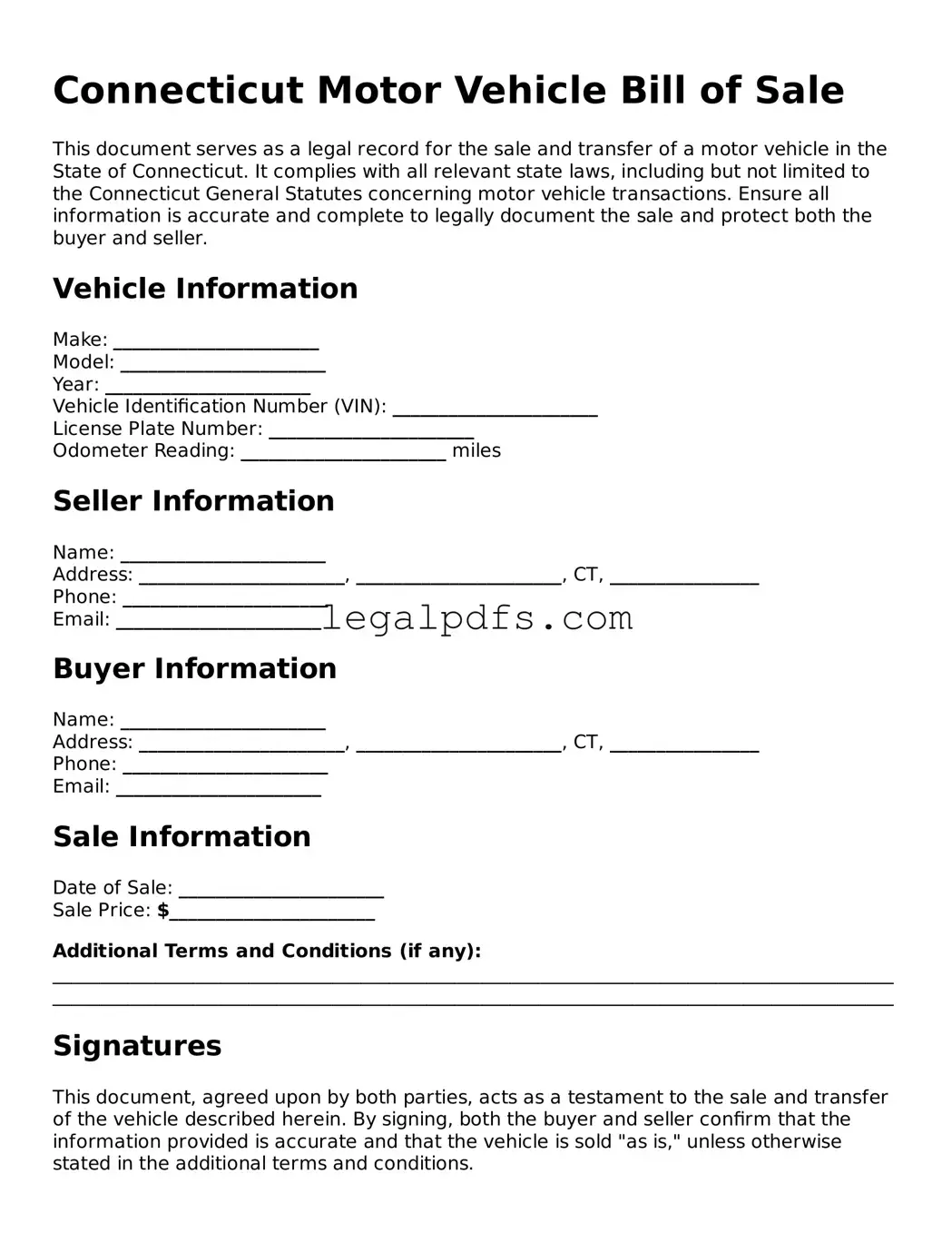Connecticut Motor Vehicle Bill of Sale
This document serves as a legal record for the sale and transfer of a motor vehicle in the State of Connecticut. It complies with all relevant state laws, including but not limited to the Connecticut General Statutes concerning motor vehicle transactions. Ensure all information is accurate and complete to legally document the sale and protect both the buyer and seller.
Vehicle Information
Make: ______________________
Model: ______________________
Year: ______________________
Vehicle Identification Number (VIN): ______________________
License Plate Number: ______________________
Odometer Reading: ______________________ miles
Seller Information
Name: ______________________
Address: ______________________, ______________________, CT, ________________
Phone: ______________________
Email: ______________________
Buyer Information
Name: ______________________
Address: ______________________, ______________________, CT, ________________
Phone: ______________________
Email: ______________________
Sale Information
Date of Sale: ______________________
Sale Price: $______________________
Additional Terms and Conditions (if any):
__________________________________________________________________________________________
__________________________________________________________________________________________
Signatures
This document, agreed upon by both parties, acts as a testament to the sale and transfer of the vehicle described herein. By signing, both the buyer and seller confirm that the information provided is accurate and that the vehicle is sold "as is," unless otherwise stated in the additional terms and conditions.
Seller's Signature: ______________________ Date: ______________________
Buyer's Signature: ______________________ Date: ______________________
Witness (if applicable)
Witness's Signature: ______________________ Date: ______________________
Print Name: ______________________
Note: It is recommended to keep copies of this document for both the buyer's and seller's records. For further information regarding vehicle sales or transfers, please consult the Connecticut Department of Motor Vehicles or a legal professional.
